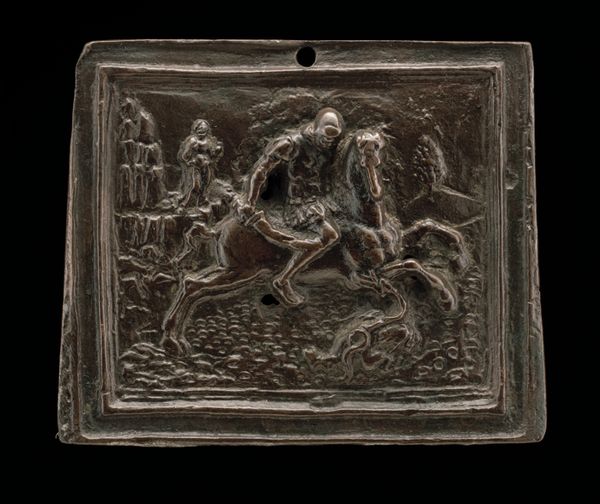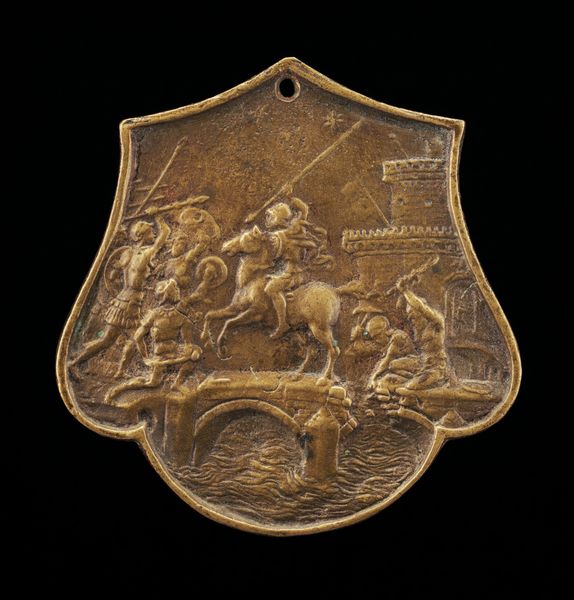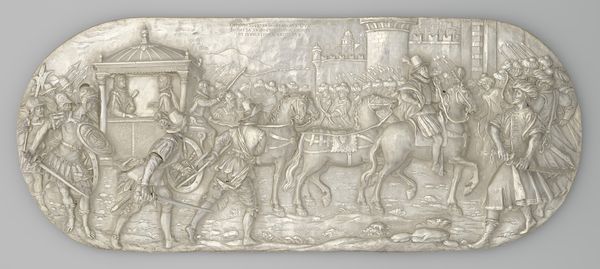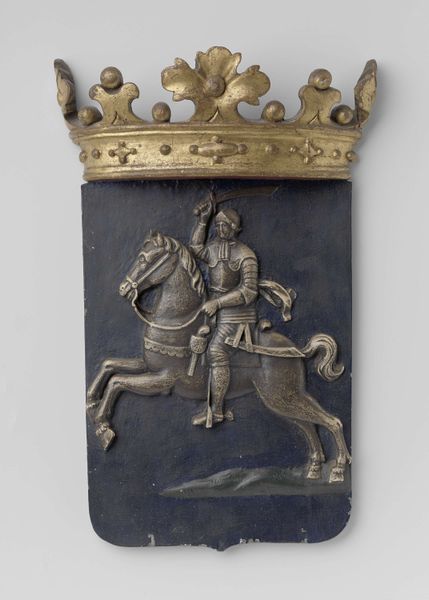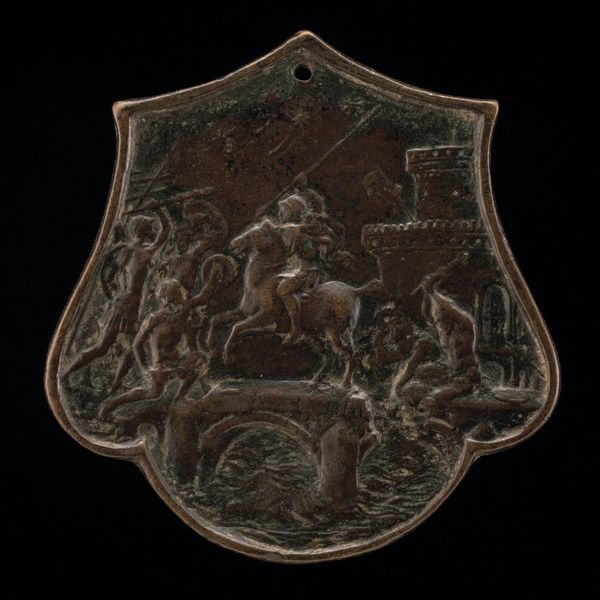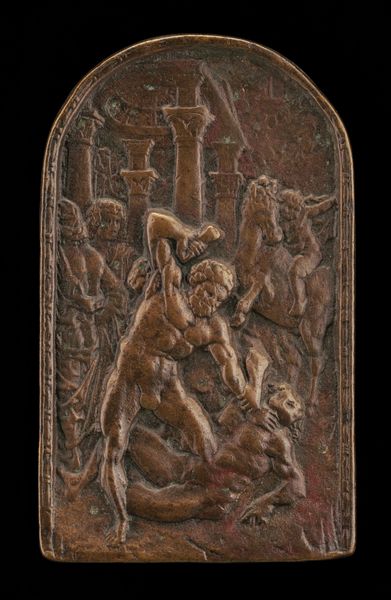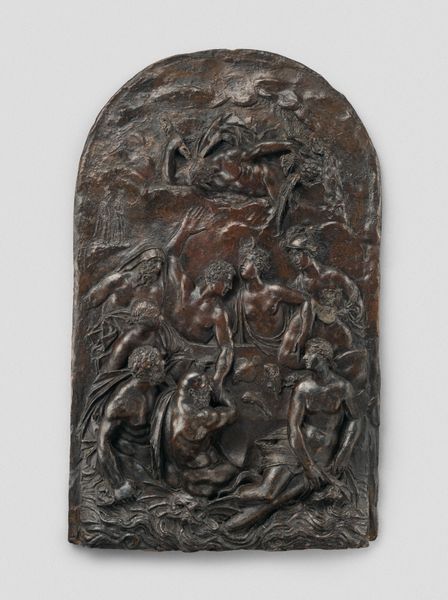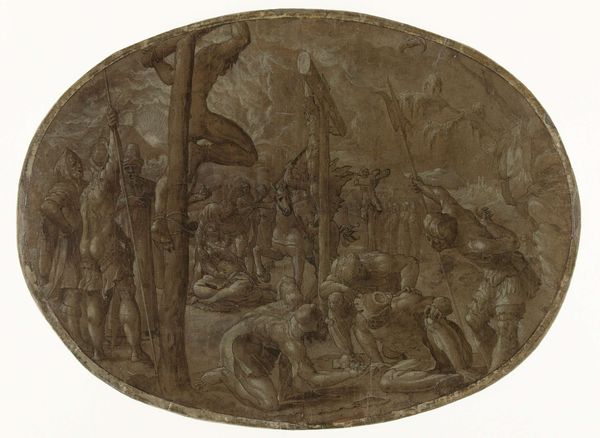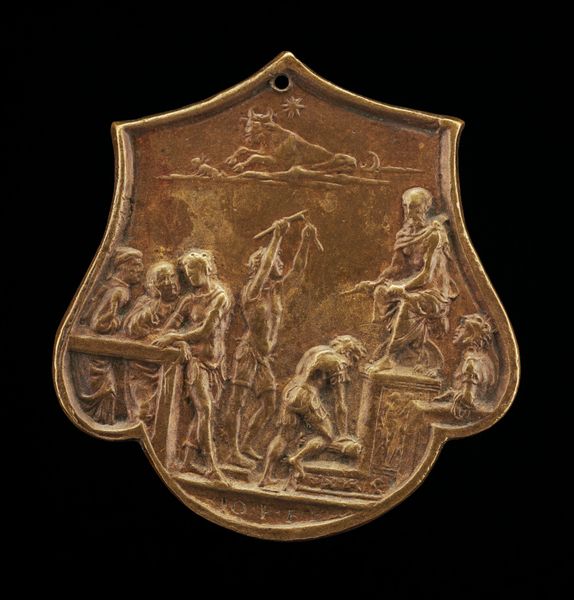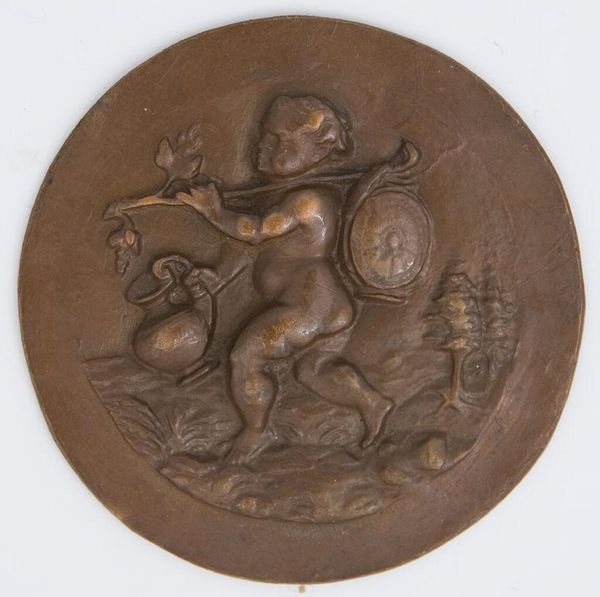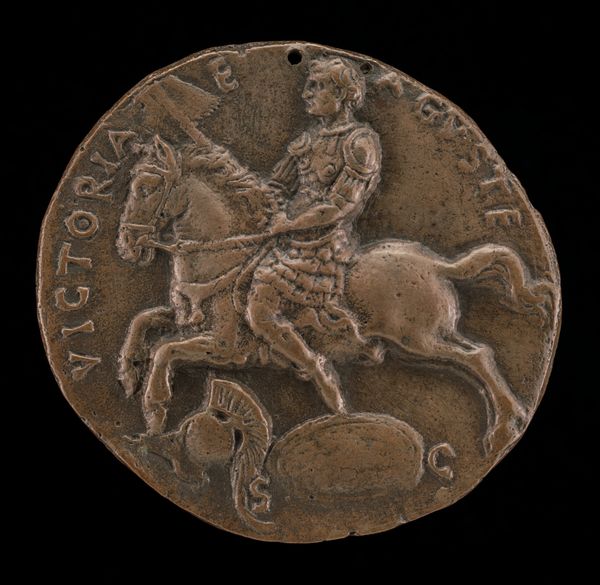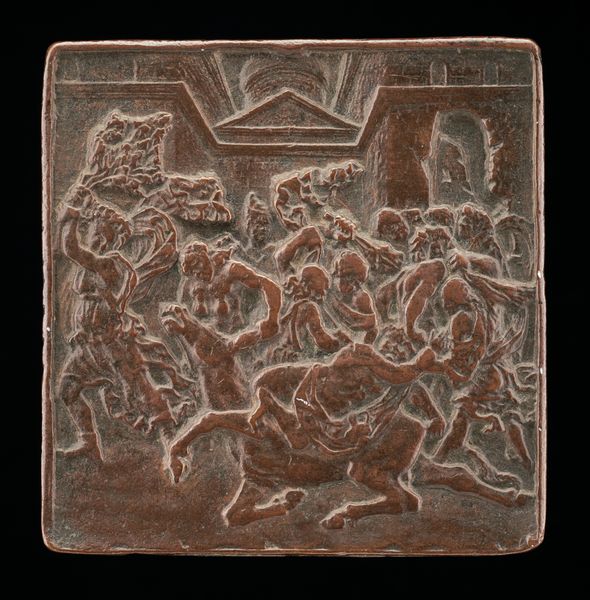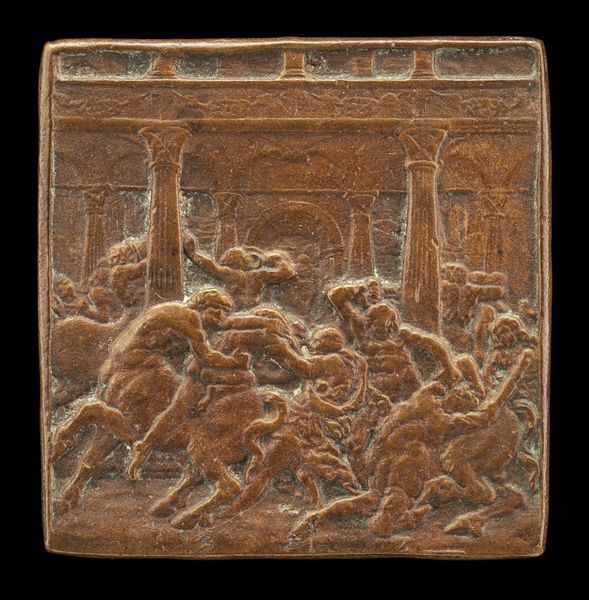
The Rape of Ganymede 16th century
0:00
0:00
relief, bronze, sculpture
#
animal
#
human-figures
#
sculpture
#
relief
#
bronze
#
figuration
#
11_renaissance
#
sculpture
#
horse
#
human
#
texture
#
history-painting
#
decorative-art
#
italian-renaissance
Dimensions: Overall: 1 15/16 × 1 7/8 in. (4.9 × 4.8 cm)
Copyright: Public Domain
Editor: Here we have a bronze relief from the 16th century titled "The Rape of Ganymede," created by Cristoforo Caradosso Foppa, found in the Metropolitan Museum of Art. It strikes me as very active, a compressed composition bursting with energy despite its small scale. How do you read this piece? Curator: Indeed, the dynamism is immediately apparent. Let us observe how the artist uses layering and shallow depth to convey movement. Note the foreground figures rendered in higher relief, their forms robust and clearly defined, against the flattened, almost atmospheric treatment of the background. The strong diagonal lines created by the figures on horseback also introduce significant dynamism. Editor: I see that now, how the varying depths create a sense of receding space and energetic flow. What do you make of the aerial perspective versus the raised figures? Curator: The contrast between the tightly packed forms of the hunting party below, all striving toward the left, and the floating Ganymede above caught in Zeus's avian embrace introduces an important formal tension. The textural variations across the surface--from the smooth bodies to the rugged landscape elements--enhance this drama. It would appear the goal is more to capture an emotional intensity more than accurately represent depth. What elements do you find most compelling about this design? Editor: It’s definitely this aerial element of Zeus. Considering the overall textural variations and intense formal drama, is there anything particularly revealing of the sculptor's mindset about Ganymede or Zeus based on formal choices? Curator: Through sharp contrasts and formal devices of layering, the artist builds tension, conveying, visually, the struggle. Ganymede’s plight is in direct contrast to Zeus's predatory dominance, which introduces multiple, more ambiguous elements. How would you compare the sculptor's treatment of human form here against mythological references? Editor: The formal dynamism enhances an active and imposing aesthetic, so it is useful to know the mythology in any reading of this piece, adding depth beyond basic assumptions. Thanks so much! Curator: Precisely! And seeing the historical context offers another interpretive angle, adding layers to our reading. It underscores the formal interplay between composition and the narrative content of the relief.
Comments
No comments
Be the first to comment and join the conversation on the ultimate creative platform.
